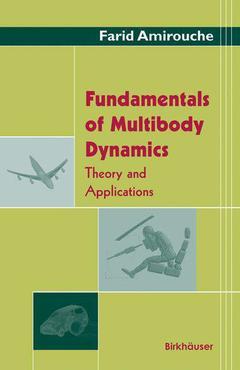Fundamentals of Multibody Dynamics, 2006 Theory and Applications
Auteur : Amirouche Farid

Because of its versatility in analyzing a broad range of applications, multibody dynamics has grown in the past two decades to be an important tool for designing, prototyping, and simulating complex articulated mechanical systems. This textbook brings together diverse concepts and bridges the gap between dynamics and engineering applications such as microrobotics, virtual reality simulation of interactive mechanical systems, nanomechanics, flexible biosystems, crash simulation, and biomechanics.
The book puts into perspective the importance of modeling in the dynamic simulation and problem solving in the above-mentioned fields. Facilitating the understanding of rigid- body dynamics, the author presents a compiled overview of particle dynamics and Newton?s second law of motion. A particular strength of the book is its use of matrices to generate kinematic coefficients that help formulate the governing equations of motion.
Date de parution : 09-2005
Ouvrage de 684 p.
21x29.7 cm
Thème de Fundamentals of Multibody Dynamics :
Mots-clés :
Gravity; MATLAB; construction; kinematics; linear optimization; mechanics; modeling; multibody system; robot; robotics; simulation; stability; vibration; virtual reality



